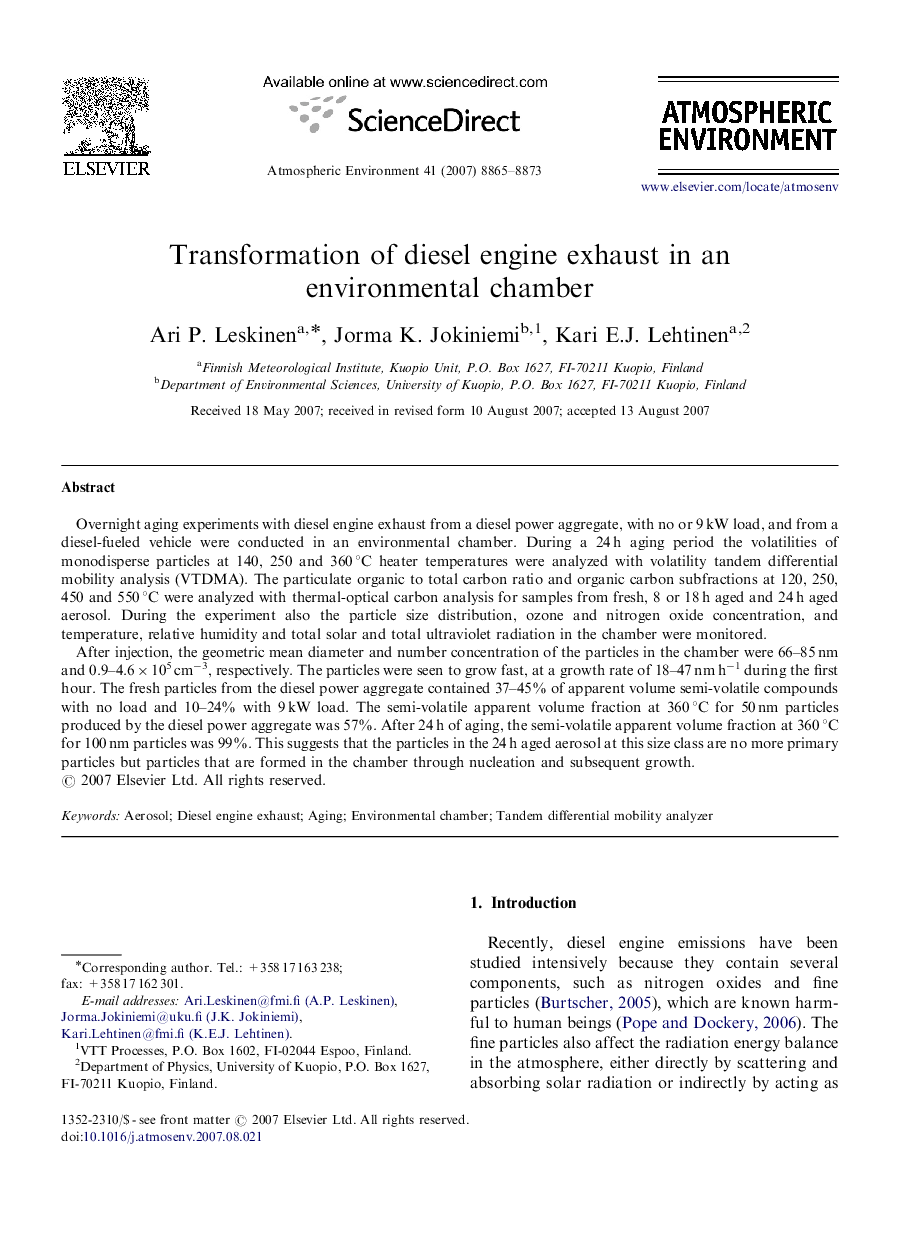| Article ID | Journal | Published Year | Pages | File Type |
|---|---|---|---|---|
| 4443135 | Atmospheric Environment | 2007 | 9 Pages |
Overnight aging experiments with diesel engine exhaust from a diesel power aggregate, with no or 9 kW load, and from a diesel-fueled vehicle were conducted in an environmental chamber. During a 24 h aging period the volatilities of monodisperse particles at 140, 250 and 360 °C heater temperatures were analyzed with volatility tandem differential mobility analysis (VTDMA). The particulate organic to total carbon ratio and organic carbon subfractions at 120, 250, 450 and 550 °C were analyzed with thermal-optical carbon analysis for samples from fresh, 8 or 18 h aged and 24 h aged aerosol. During the experiment also the particle size distribution, ozone and nitrogen oxide concentration, and temperature, relative humidity and total solar and total ultraviolet radiation in the chamber were monitored.After injection, the geometric mean diameter and number concentration of the particles in the chamber were 66–85 nm and 0.9–4.6×105 cm−3, respectively. The particles were seen to grow fast, at a growth rate of 18–47 nm h−1 during the first hour. The fresh particles from the diesel power aggregate contained 37–45% of apparent volume semi-volatile compounds with no load and 10–24% with 9 kW load. The semi-volatile apparent volume fraction at 360 °C for 50 nm particles produced by the diesel power aggregate was 57%. After 24 h of aging, the semi-volatile apparent volume fraction at 360 °C for 100 nm particles was 99%. This suggests that the particles in the 24 h aged aerosol at this size class are no more primary particles but particles that are formed in the chamber through nucleation and subsequent growth.
